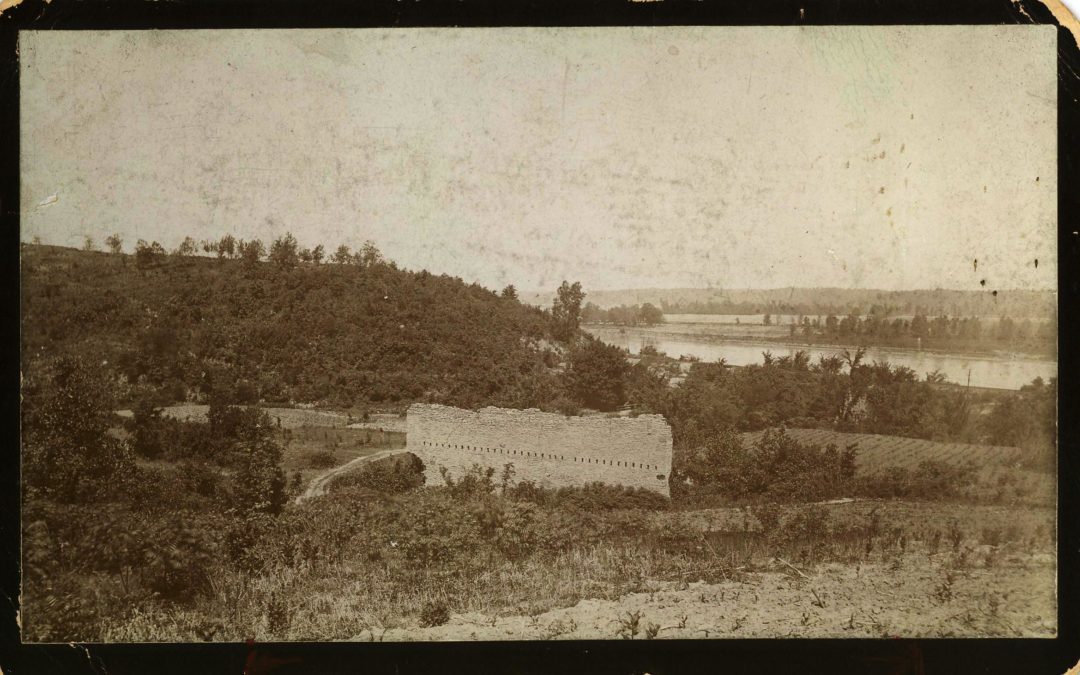Above: Quindaro Townsite ruins circa 1886. (Image courtesy Wyandotte County Museum.)
Early this summer, the Kansas Historic Board of Review approved a $20,000 grant request to fund a project to elevate the Quindaro Townsite ruins in Kansas City, Kansas to National Historic Landmark status. Administered by Freedom’s Frontier National Heritage Area, the grant will be awarded to the Unified Government of Wyandotte County and Kansas City, Kansas.
Although the ruins were listed on the National Register of Historic Places in 2002, National Historic Landmark is a rare designation for historic places. 2,500 historic properties have been named National Historic Landmarks, 26 of which are in Kansas. Designated as nationally significant by the Secretary of the Interior and National Park Service, the properties must possess exceptional value or quality in illustrating or interpreting the country’s heritage.
Founded in 1856 by abolitionist Abelard Guthrie and named for Nancy Quindaro Brown, Guthrie’s wife and a Wyandot Indian, the area was established as a safe harbor for escaped slaves crossing the Missouri River into Kansas and became a vital stop for those seeking freedom on the Underground Railroad. The town’s population scattered as a result of the Civil War, and the Kansas state legislature revoked the town’s incorporation in 1862.
Later in the decade, a Presbyterian minister founded the Quindaro Freedman’s School to educate the children of the escaped slaves and other black families that were settling the area. In 1882, the school was acquired by the African Methodist Episcopal Church, which became Western University in 1891. The university was the only one of its kind to ever operate in Kansas. By the early 1900s, the campus emerged as a thriving university. A statue of abolitionist icon John Brown was erected on the grounds in 1911. While the university shuttered its doors in the 1940s, the statue remains as evidence of Quindaro’s progressive history.
More recently, the Kansas Humanities Council awarded a grant to Freedom’s Frontier to assist in recording the Quindaro’s oral histories.
Quindaro’s ruins belong to the Allen Chapel AME Church and the City of Kansas City, Kansas, both of which are actively involved in acquiring it National Historic Landmark status.


Recent Comments